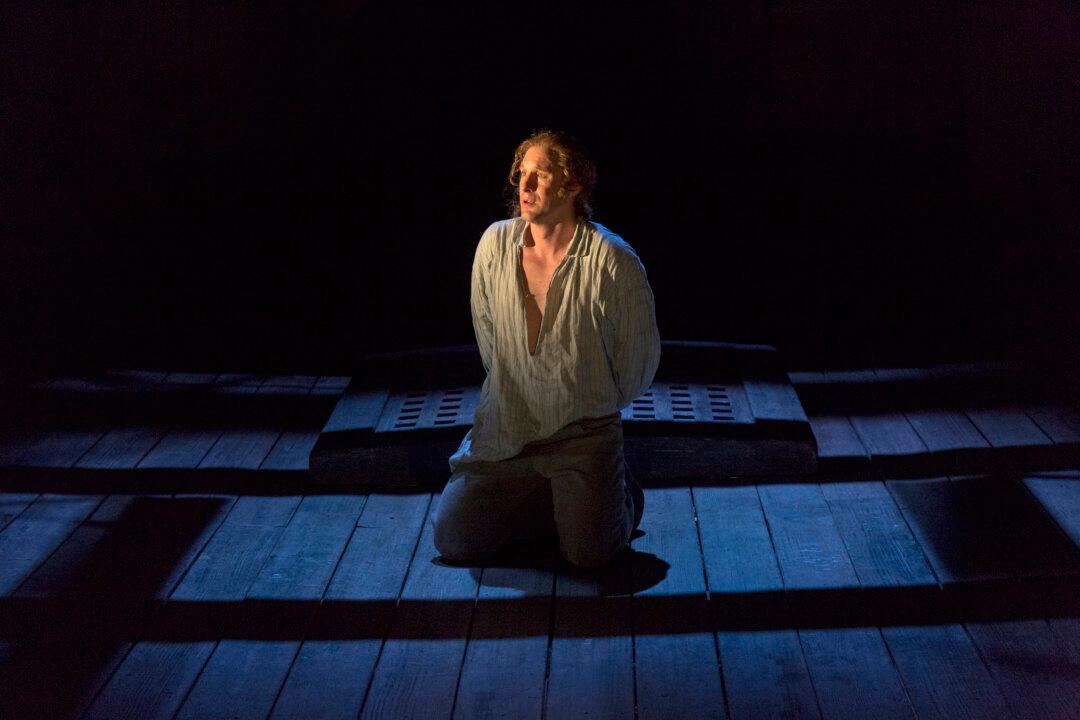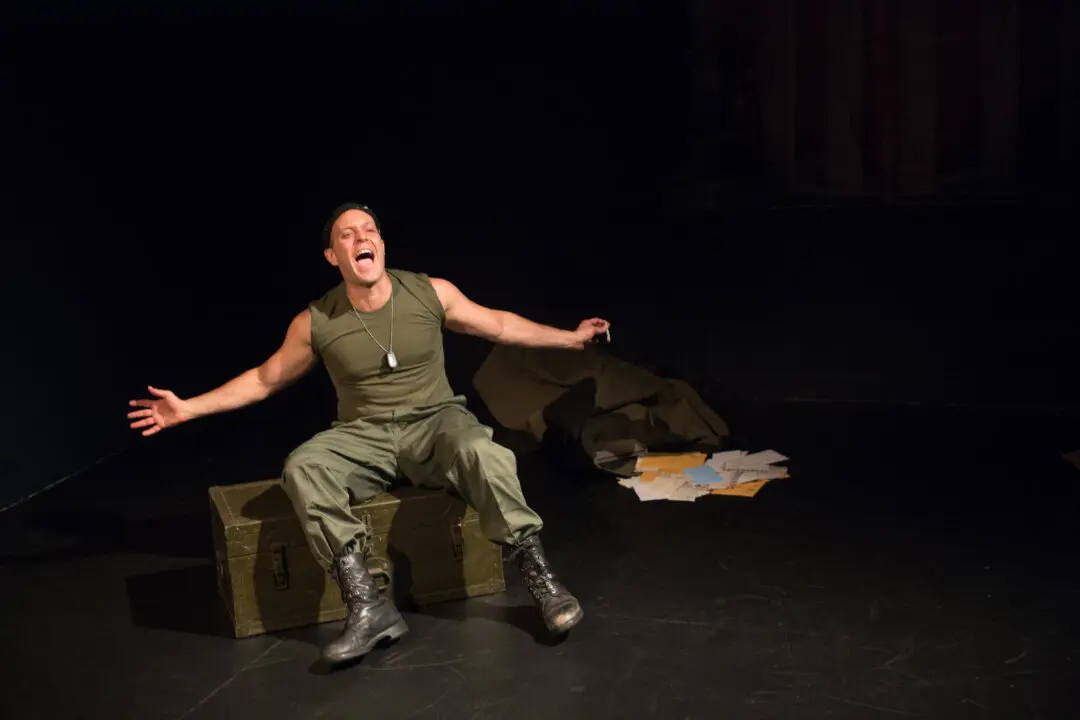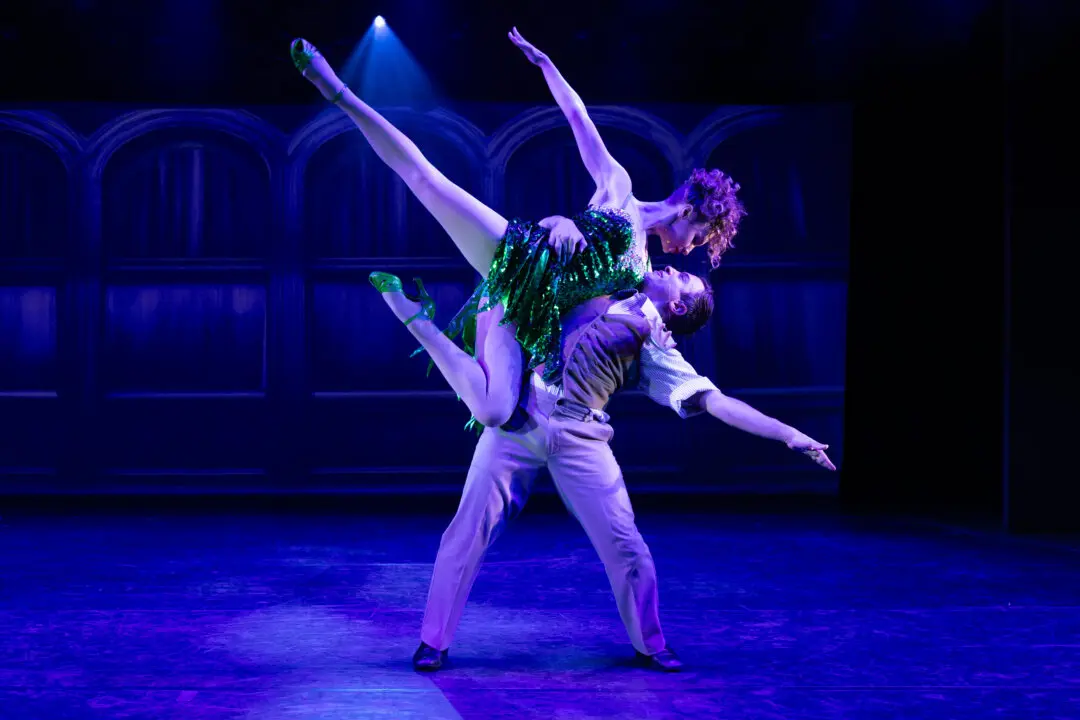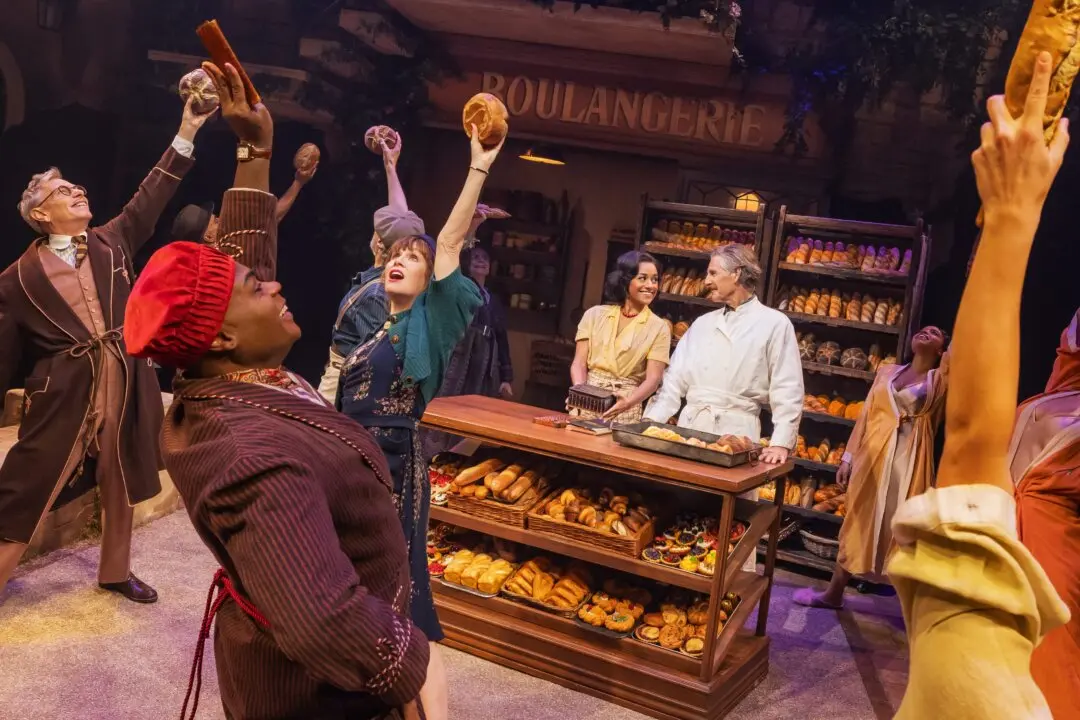NEW YORK—Life is not all play on a ship of war, so said the characters in the Glyndebourne Festival Opera’s presentation of Benjamin Britten’s Billy Budd. The opera recently finished a revival run at the Brooklyn Academy of Music’s Gilman Opera House.
Based on the Herman Melville novella, Billy Budd is a story of honor, duty, and treachery on the high seas.
The bulk of the opera takes place in 1797 on the lower decks of the British ship HMS Indomitable during the French Wars. Among the crew is Billy Budd (Jacques Imbrailo), a recently conscripted fellow and able seaman by trade, who can’t read but who can sing with the best of them. He also doesn’t know his true age as he is a foundling.
Billy’s good nature quickly endears him to most of the officers and crew but earns him the enmity of John Claggart (Brindley Sherratt), the ship’s Master-At-Arms.
Claggart becomes intent on destroying Billy, who represents much of what is beautiful and good in the world. To this end, Claggart begins to insinuate that Billy is spreading sedition among the sailors and is plotting mutiny against Vere (Mark Padmore), the ship’s captain.
Interestingly, Billy Budd is not really a major character in the story. Rather, he’s more of a pawn in a battle between good and evil, the two positions represented by Claggart and Vere. While Vere is a good man, he has little idea of the everyday things going on aboard ship or perhaps simply doesn’t want to know.
The opera has a running theme about how innocence and idealism cannot survive in the real world, as both Billy and Vere, the latter who relates the story via flashback, ultimately learn.
The production also took great pains to show the difference in status aboard ship: Some of the officers walked on higher levels of the craft as others strode the lower level, while the sailors were often on their knees scrubbing the decks.
Set designer Christopher Oram did a masterful job creating an entire world unto itself in which the men hoisted sails, prepared for battle, or shared a quiet moment when off-watch.
There was a strong feeling of patriotism among the crew as well as a complete trust in Vere, who they would willingly follow into hell—this despite cruel punishments meted out by the officers and the different circumstances that brought the various crew members together in the first place.
Imbrailo did quite well as Billy, a young man who believes in the best of everyone he meets. That is, until he learns otherwise, and then heaven help those who cross him.
Sherratt was wonderfully malevolent as Claggart, a stern, scheming, and malevolent presence who is deathly afraid of Billy. He fears the newcomer may somehow corrupt him into becoming something better than he currently is. The scene where Claggart confronts his own nature and what Billy represents to him was one of the production’s most fascinating moments.
Padmore made a strong Vere, the most complex character in the piece and thus the one with the most to lose. He is a man bound by honor and duty and finds these elements quickly coming into conflict.
The rest of the company was quite good, among them Stephen Gadd and David Soar as ship’s officers and Jeremy White as Dansker, an aging seamen who befriends Billy.
The music, courtesy of the London Philharmonic Orchestra under the able baton of Sir Mark Elder, was thrilling to hear, as was the singing, though the words at times tended to get lost in the Opera House space.
Still it was quite enjoyable, moving from a rousing chorus as the entire ship prepares for battle to Imbrailo’s sweet baritone, which came across perfectly as he sung about his delight on being aboard the Indomitable and his quiet joy when joining the crew in a sea shanty.
Oram’s immense set of the ship was wonderful to behold without being overpowering. Lighting effects by Paule Constable were nicely subdued as were Oram’s costumes. In one key scene, the light and the color came up full force so that the sudden shift made the effect all the more piercing.
Helping to tie it all together was Michael Grandage’s excellent original direction, chores handled here by Ian Rutherford who’s credited as “revival director,” in keeping the piece moving smoothly. Despite the show’s more than three hour running time, the work never felt padded or overlong.
A rousing tale of a colorful period in history, Billy Budd is a whale of a tale, wonderfully presented and strongly executed.
Also in the cast: Michael Wallace, Benjamin Cahn, Richard Mosley-Evans, John Moore, Jeffrey Lloyd-Roberts, Peter Gijsbertsen, Colin Judson, Darren Jeffery, Daniel Norman, Brendan Collins, Duncan Rock, Charlie Gill, Sebastian Davies, Tom Foreman, William Gardner, Quentin Zach Martins, Will Roberts, Boldo Janchivdorj, Samuel Guy, Eduardo Nunez, Alex McNally, Mark Ruddick, Colm Seery, Casey Beidel, Joey Casali, Jackson Demott Hill, Will Lach, Zachary Mackiewicz, Alec Mansky, Chris Richards, Justin Souriau-Levine, and Liam Thrift.
Billy Budd
Howard Gilman Opera House
Brooklyn Academy of Music
30 Lafayette Avenue
Brooklyn, N.Y.
Closed: Feb. 13
Judd Hollander is the New York correspondent for the London publication The Stage.





